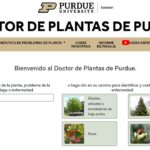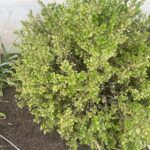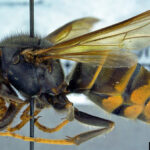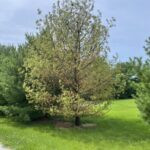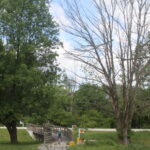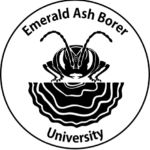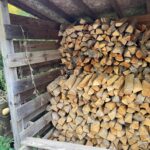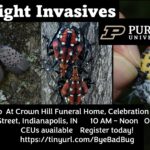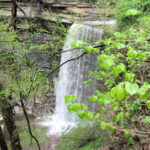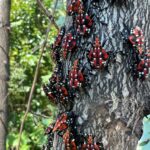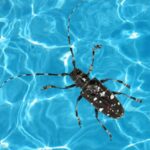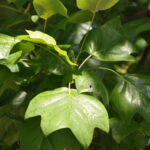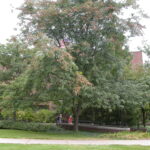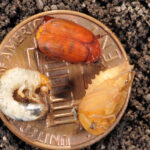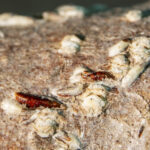Identifying a plant problem is the first step to improve the health of plants in the landscape. We created a series of short (5 to 7 min) YouTube videos to help you learn or just brush up your plant diagnostic skills. Each video guides you through the diagnostic process in real landscapes, reviews pest biology[Read More…]
Identificar qué problema tiene la planta es el primer paso para mejorar la salud de las plantas en el jardín. Hemos creado una serie de videos cortos (5 a 7 minutos de duración) en YouTube. Esto lo hemos hecho para ayudarlo a aprender o simplemente mejorar sus habilidades de diagnóstico de plantas. Cada video te[Read More…]
Mites are eight-legged arthropods who pierce plant cells to feed on them. Plants that are attacked by mites lose their green color and appear somewhat bronzed. Spider mites will make webs to help them forage on leaves unencumbered by irregular leaf surfaces. The accumulation of webs, and old skins of mites can give heavily infested[Read More…]
A new invasive insect of concern has been identified in the state of Georgia. In August of 2023, Georgia’s Department of Agriculture, along with the USDA, confirmed the presence of the yellow-legged hornet, Vespa velutina, outside of the city of Savannah. To date, this is the only confirmed identification of this insect in the United[Read More…]
Trees stressed by prolonged drought are more subject to attack by boring insects. This article provides tips and a video link on how to manage pines for borers. Record breaking heat and sporadic rainfall during July of 2023 took their toll on landscape trees. Cone bearing evergreens, like white pines, are especially susceptible to drought[Read More…]
Two short YouTube videos demonstrate how English and Spanish speakers can use the Purdue Plant Doctor Website. Diagnosing Plant Problems with the Purdue Plant Doctor Web Page (5 minutes -in English with closed captions) Guia Rapida Diagnosticar y Manejar Problemas de las Plantas con Purdue Plant Doctor ( 9 minutes in Spanish with closed[Read More…]
EAB University is about to start its fall semester, bringing you the information you need about emerald ash borer and other invasive pests and diseases that are now impacting our trees, forests and woodlands. Here’s a schedule of the webinars we have locked in so far. We will update you if other webinar presentations become[Read More…]
Learn how to protect Indiana from invasive species at a free workshop. Professor Cliff Sadof of Purdue University and Carrie Tauscher, Arboretum Director of the Crown Hill Heritage Foundation will show you the best way to look for and report invasive species and provide a chance to practice reporting on the Crown Hill Grounds. Whether[Read More…]
All plants can fall victim to insects, diseases, and environmental problems. How they respond to this stress is often the same: Wilting, yellowing, holes, rots, blight—it’s a long list! With so much overlap in symptoms, it can be quite a challenge for people to identify their plant health problems accurately, quickly, and inexpensively. The Purdue[Read More…]
Trees need to be tough to survive the abuse we put them through in cities. Often planted parking lots and on streets, they are stressed by drought in the summer and de-icing salts in the winter. Honeylocust trees are a great choice for cities because in addition to their pleasing shape and fall color, they[Read More…]
Key Features Round, brown beetle Chewed leaves and flowers Chewed roots Symptoms Leaf margins are chewed by adult beetles. Leaves are stripped and left in a ragged appearance after adult feeding which is much different than the skeletonization caused by Japanese beetle feeding. Adults are about the size of Japanese beetles. Larvae are c-shaped grubs[Read More…]
Japanese maple scales (JMS) attack a wide variety of trees and shrubs. They are common on dogwood, elms, flowering fruit trees, maples, magnolias, lilac and roses. Heavy infestations can kill tree branches. Unlike the closely related soft scales, these insects will be dry and not coated with sticky liquid excrement. All stages of this scale[Read More…]


